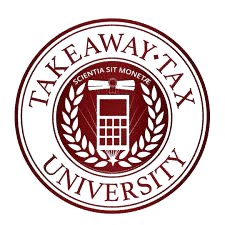Full Ride Scholarships
Landing a full ride scholarship is the ultimate dream for future college students—a golden ticket to earning a degree without drowning in debt. Beyond just covering costs, these scholarships often come with perks like personalized mentorship and a built-in community. With so much on offer, it’s no surprise they’re tough to find (and even tougher to win). So if you’re wondering how to snag one, you’re in the right place.
There are plenty of ways to secure a full ride, whether through colleges offering them, private scholarships, or even government-sponsored programs. The opportunities are out there—you just need to find the right fit and meet the criteria.
Scholarship resources can help you find options that match your background, interests, and goals. But keep in mind: most scholarships online aren’t full rides. Some cover just tuition, while others are partial awards. With so many choices, we’ve put together this guide to help you focus on finding and applying for full ride scholarships.
This guide covers everything you need to know, including:
- What full ride scholarships are and what they cover
- The difference between full ride and full tuition scholarships
- A list of top scholarships and colleges offering full rides
- Tips for winning one
- Where to find scholarships for high school seniors (and more!)
But first, let’s talk about why these scholarships matter so much in today’s college landscape.
Rising College Costs and Financial Aid
With college prices hitting record highs, more students are weighing whether the cost is worth it. For context, in 2024-25, average tuition and fees were:
- $11,610 for public in-state schools
- $30,780 for public out-of-state
- $43,505 for private nonprofits
And that’s just tuition—it doesn’t include housing, meals, books, or other expenses. At many top schools, the total cost can easily exceed $90,000 per year! But don’t let sticker shock scare you off.
When it comes to college costs, there’s a big difference between the “sticker price” (what’s listed) and the “net price” (what you actually pay). Many schools with high price tags also offer full ride scholarships, federal aid, and other grants, meaning students often pay just a fraction of the total cost.
Another huge perk of scholarships? Unlike loans, you don’t have to pay them back. Even low-interest government loans eventually need repayment—with interest—which can strain your finances long-term. Full rides let you skip debt entirely, giving you the best shot at a high return on your college investment.
What Are Full Ride Scholarships?
To win a full ride, you first need to understand what they offer. These scholarships cover your entire cost of attendance—tuition, fees, room, and board. Some even cover extras like travel, books, and supplies.
Unlike partial scholarships, full rides wipe out the financial burden completely. Because they’re so generous, they’re often reserved for students who couldn’t otherwise afford college. But it’s not just about financial need—these scholarships look for candidates who’ll make the most of their education. That means top grades, leadership roles, community service, or standout achievements in a specific field.
Do Full Ride Scholarships Cover All Four Years?
Most do! Typically, they cover four years of undergrad, but you’ll usually need to meet certain requirements to keep them, like maintaining a minimum GPA, participating in scholarship activities, or completing service hours.
If you take longer than four years (say, by double-majoring), you might have to cover the extra time. On the flip side, if you graduate early, your funding might stop since you won’t need it anymore.
How Do Full Ride Scholarships Impact Your College Experience?
Schools offering full rides often provide unique opportunities, like funded internships, study abroad programs, or research projects. You might also network with other scholars, mentors, and experts in your field.
While these scholarships remove financial stress, they come with pressure to maintain eligibility. But remember—you weren’t awarded this scholarship by accident. Your school and scholarship community will support you throughout your journey.
Types of Full Ride Scholarships
Before diving into specific scholarships, let’s break down the four main types:
- Merit-Based – Academics rule here. High GPAs, stellar test scores, and strong scholarship essays are key.
- Need-Based – Your family’s financial situation determines eligibility. These are for students who need the most help.
- Service-Based – Grades aren’t everything. Leadership, extracurriculars, and community service matter too.
- Specialty Scholarships – These target specific majors, demographics, or fields (like government-sponsored programs).
Doing thorough research helps you find scholarships that fit your background. A personalized list makes it easier to focus on opportunities where you have the best shot.
Full Ride vs. Full Tuition Scholarships
Don’t get them confused! Full tuition scholarships only cover tuition—not room, board, or other expenses. That means you could still face hefty bills. For example, at NYU, a full tuition scholarship leaves you paying $25,526/year for housing and meals, plus other costs.
That said, full tuition scholarships can be combined with other aid (like federal grants). And if you commute from home, they might feel like a full ride. But true full rides cover everything, so you don’t have to patch together different funding sources.
Are Athletic Scholarships Full Rides?
If you’re a student-athlete, you might wonder if sports can land you a full ride. While it’s possible, most athletic scholarships are partial, not full rides. For example, the average NCAA DI scholarship is:
- $19,000 for women’s basketball
- $24,058 for football
These amounts are closer to full tuition than full rides. Why? Athletic scholarships depend on program funding and limits. But that doesn’t mean student-athletes can’t get full rides—many schools combine athletic scholarships with other aid to make college affordable. Just like other scholarships, athletes must maintain eligibility (both in sports and academics) to keep their funding.
7 Full Ride Scholarships for High School Seniors
If you’re unsure where to start, here’s a list of top scholarships to explore:
- QuestBridge National College Match Scholarship
- For high-achieving, low-income students.
- Partners with 50+ top schools (Harvard, MIT, Stanford, etc.).
- Covers tuition, room, board, books, and travel.
- The Gates Scholarship
- For Pell Grant-eligible students from underrepresented groups.
- Covers any remaining costs after other aid.
- Requires top 10% class rank + 3.3+ GPA.
- USDA 1890 National Scholars Program
- For students in agriculture, food, or natural resources.
- Partners with 19 land-grant universities.
- Requires essays on your field of interest.
- Flinn Scholars Program
- For Arizona residents attending in-state public universities.
- Covers tuition, housing, meals, and study abroad.
- Requires 3.5+ GPA and top 5% class rank.
- Jack Kent Cooke College Scholarship Program
- For high-achieving students with financial need.
- Covers remaining costs after other aid.
- Apply via Common App (yes, really!).
- Ronald V. Dellums SMART Scholarship
- For STEM students.
- Includes tuition, stipends, internships, and a DoD job after graduation.
- Stamps Scholars Program
- Offered at 36 partner schools (Notre Dame, UChicago, etc.).
- Covers full cost + enrichment funds.
Bonus for Juniors: The Coolidge Scholarship is a prestigious merit-based full ride—apply as a junior!
If none of these fit, don’t worry. Many colleges offer their own full rides. Up next: 9 colleges with full-ride scholarships.
Colleges with Full Ride Scholarships
Here’s a look at some schools offering full rides, plus what you need to apply:
- Duke & UNC Chapel Hill (Robertson Scholars)
- Covers tuition, housing, fees, study abroad, and summer programs.
- Separate application due mid-November.
- University of Virginia (Jefferson & Walentas Scholars)
- Full tuition, room, board, books, and fees.
- Walentas is for first-gen students only.
- Wake Forest (Nancy Susan Reynolds Scholarship)
- Tuition, housing, 3,400forpersonalexpenses,and3,400forpersonalexpenses,and5,000 for summer programs.
- No separate application—automatic consideration.
- Michigan State (Alumni Distinguished Scholarship)
- Full tuition, housing, meals, fees, + $1,000/year.
- Competitive process with essays, exams, and interviews.
- Ohio State (Morrill Scholarship – Distinction Level)
- Covers full attendance cost.
- Focus on leadership, service, and social justice.
- Clemson (National Scholars Program)
- Tuition, housing, meals, fees, + mentorship/alumni network.
- Apply by mid-October for consideration.
- Northeastern (Torch Scholars Program)
- For first-gen students.
- Covers tuition, housing, books, and fees.
- University of Rochester (Handler Scholarship)
- Most prestigious award at UR.
- Covers everything, including travel and personal expenses.
Are Full Ride Scholarships Hard to Get?
Yes—they’re highly competitive. Since they’re worth tens (or hundreds) of thousands, schools get tons of applications. Ideal candidates have:
- Near-perfect grades (often 3.8+ GPA)
- College-level coursework (AP/IB/Dual Enrollment)
- Strong extracurriculars with leadership roles
- Compelling essays that showcase their potential
How to Apply
- Research – Find scholarships that fit your profile.
- Check Eligibility – Some require nominations or specific backgrounds.
- Prepare Materials – Transcripts, essays, recommendation letters, etc.
- Meet Deadlines – Some are as early as October!
Do They Require Separate Applications?
Most do, but some schools consider you automatically. Always double-check!
What GPA Do You Need?
- Merit-based full rides: Usually 3.5–4.0
- Athletic scholarships: Often 2.5–3.0
- Renewal typically requires maintaining a high GPA.
Writing Standout Scholarship Essays
Essays are your chance to shine. Common topics include:
- Leadership experiences
- Academic passions
- Overcoming challenges
- Future goals
Tips:
- Be authentic and reflective.
- Avoid clichés—focus on your story.
- Revise, revise, revise!
5 Tips to Boost Your Chances
- Align with the Scholarship’s Mission (e.g., first-gen support, STEM focus).
- Highlight Unique Leadership – Stand out with what makes you different.
- Show Long-Term Goals – How will you make an impact?
- Prepare for Interviews – Practice with mentors or teachers.
- Be Genuine – Committees can spot fake enthusiasm.
Where to Find More Scholarships
Check:
- Scholarships.com
- College Board’s Big Future
- FastWeb
- Unigo
- School financial aid offices
Final Takeaways
Full ride scholarships are life-changing but competitive. Focus on:
- Strong grades + test scores
- Standout essays and extracurriculars
- Researching the right opportunities
If you need help, CollegeAdvisor assists students with applications, essays, and interview prep. Schedule a free consultation to get started!

